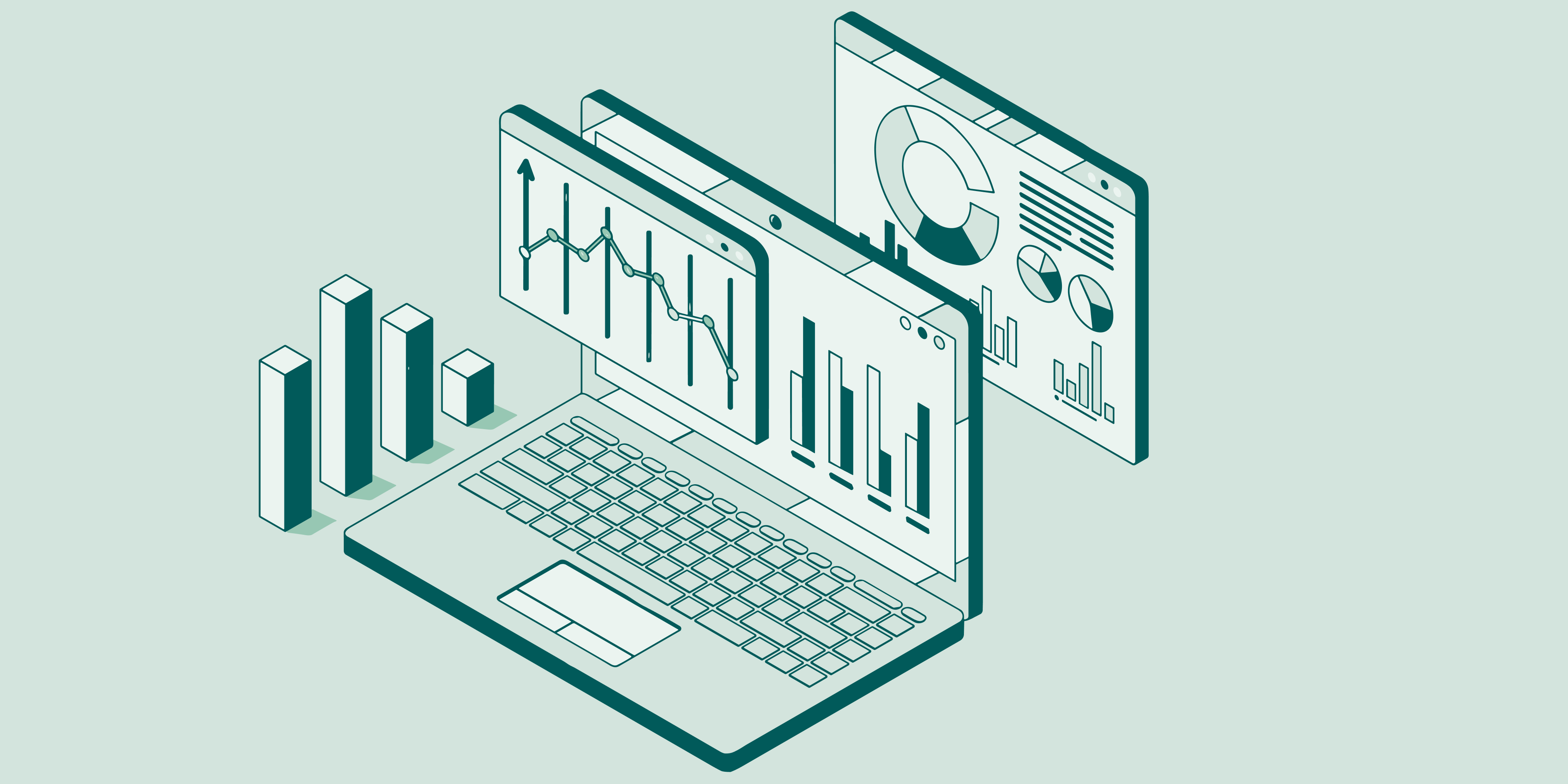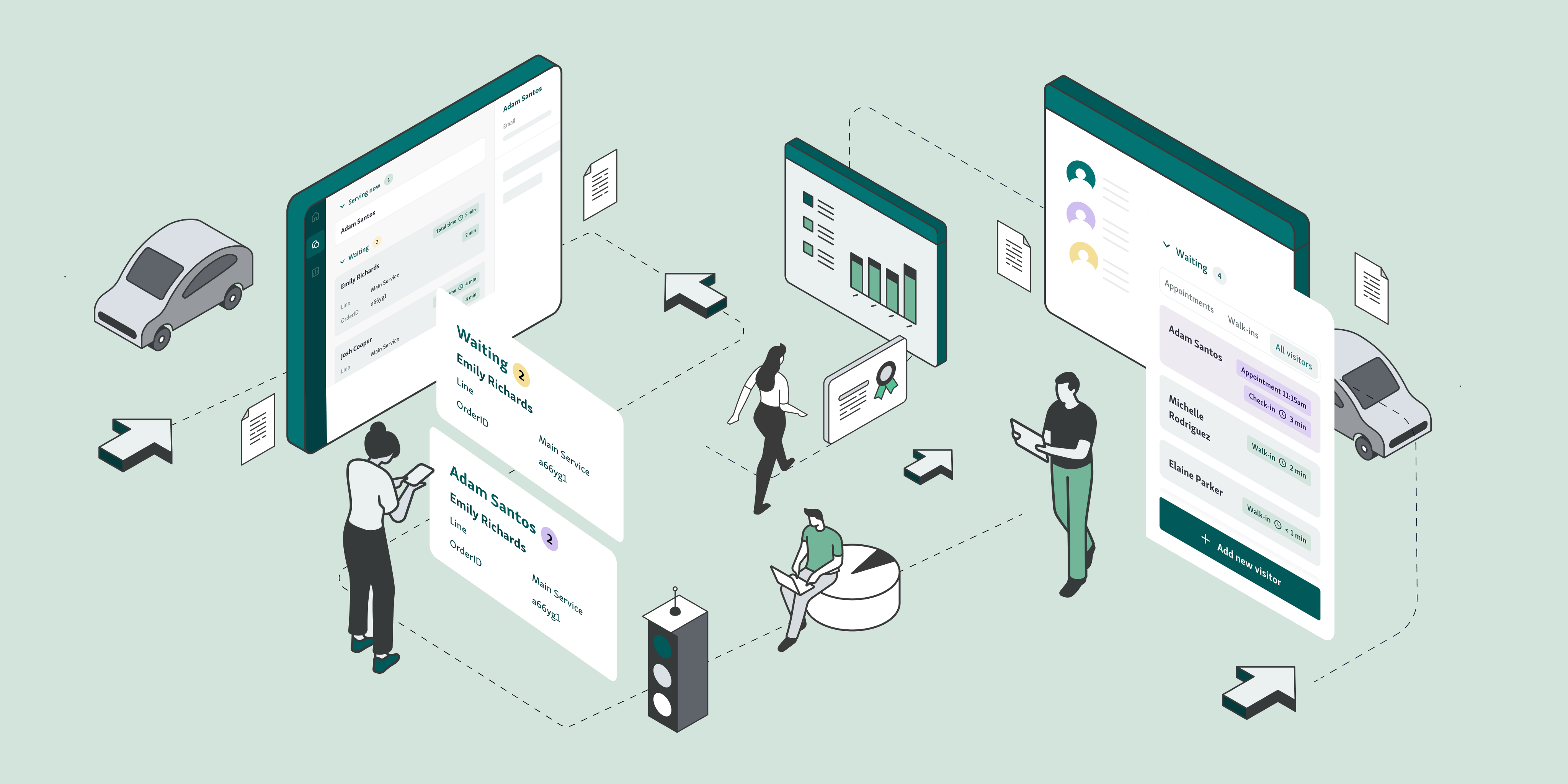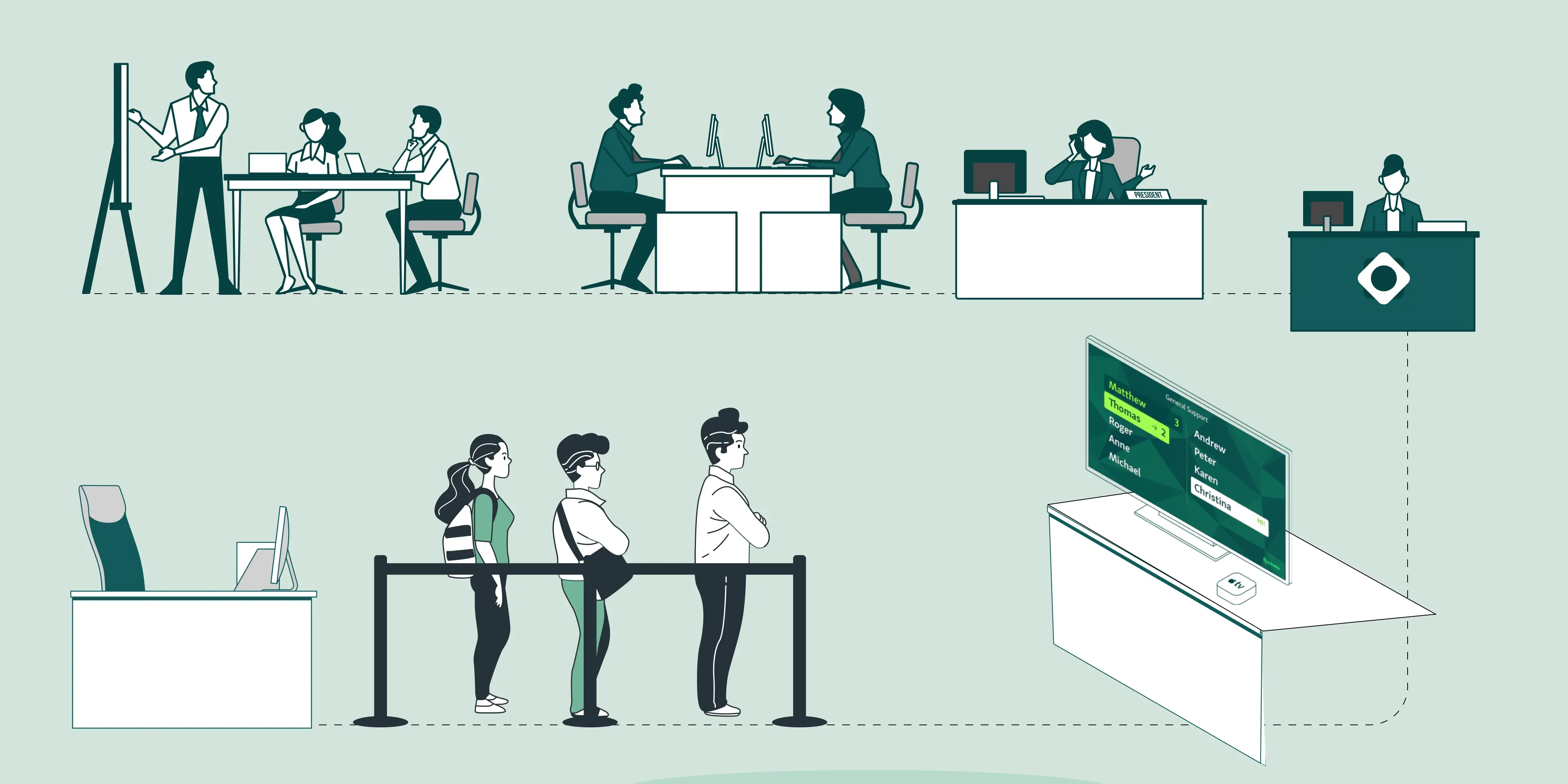It’s 10 a.m. at your local DMV — the lobby is overcrowded, the line snakes around the building, and frustrated citizens shuffle through paperwork, unsure of how long they’ll be waiting.
Meanwhile, staff are overwhelmed, fielding complaints while trying to manage the growing chaos. Scenes like this are all too familiar in public institutions that rely solely on walk-in systems. For instance, average wait times across states can vary significantly, as shown in the table below:
State | Average DMV Wait Time |
California | 38 minutes |
Texas | 45 minutes |
Florida | 34.55 minutes |
Hawaii | 1 hour |
New Jersey | 26 minutes |
New York | 35 minutes |
North Carolina | 35 minutes |
Colorado | 43.25 minutes |
Minnesota | 43 minutes 56 seconds |
Utah | 10 minutes |
Wisconsin | 10 minutes |
(Source)
According to a survey, 57% of respondents said they expect technology to change for the better the way they use government services. This means departments shying away from the trend of making online services a priority will fall short.
In this blog, we’ll explore how implementing appointment scheduling software at DMVs and City Halls can reduce wait times, ease operational stress, and significantly improve the citizen experience.
The High Cost of Not Using Scheduling Software
Failing to implement appointment scheduling software doesn’t just lead to inconvenience — it comes with real operational and reputational costs for government offices.
1. Operational Inefficiency
Without an appointment system, staff are left blind to what each day will bring. Will 30 people show up? Or 130? The result is a reactive environment where employees scramble to manage demand in real time, redirecting people manually and prioritizing on the fly. Lines form unpredictably, visitors bunch up during peak hours, and critical services are delayed.
Time that could be spent resolving issues or improving operations is instead wasted on crowd control. It’s an ongoing cycle of disorganization that makes it impossible to plan, scale, or optimize service delivery.
Read also - How Improving Citizen Flow Can Deliver Measurable ROI for Local Governments
2. Poor Citizen Satisfaction Scores
No one enjoys waiting in line for hours — especially not when they’ve taken time off work or traveled a long distance. Citizens often arrive unsure of how long they’ll have to wait, where to go, or whether they’ll even be seen that day. This uncertainty breeds frustration and resentment, especially when compared to the seamless, tech-enabled experiences they’ve come to expect in retail or healthcare.
Over time, these negative experiences compound, leading to public complaints, media coverage, and growing pressure on leadership to fix "broken" systems. In today’s climate, poor service isn’t just an inconvenience — it’s a political liability.
3. Staff Burnout
Behind every slow-moving line is a team doing their best with limited tools. Frontline staff not only have to manage unpredictable visitor flow but also deal with escalating emotions, repeated complaints, and inefficient manual processes. It’s emotionally and physically draining.
With no scheduling insights, staff can’t prepare for peak hours, balance workloads, or focus on more meaningful tasks. Over time, this pressure leads to job dissatisfaction, disengagement, and high turnover. And when experienced employees leave, the cycle repeats — along with the costs of recruitment, onboarding, and training.
4. Inability to Report & Improve
You can’t manage what you can’t measure. Without digital systems tracking visits, wait times, service duration, and outcomes, government offices have no concrete way to analyze performance.
Leadership is left guessing: Is the office understaffed? Are certain services clogging up the system? Are wait times improving or getting worse?
Without data, improvement efforts are based on assumptions — not facts. Appointment scheduling software gives teams the visibility they need to spot inefficiencies, allocate resources wisely, and implement targeted improvements that actually move the needle.
5 Key Benefits for DMVs and City Halls
Moving away from outdated walk-in systems isn’t just a matter of modernizing — it’s about delivering faster, fairer, and more efficient public services. Below are the four key areas where this technology makes a lasting difference.
1. Improved Visitor Experience
When citizens walk into a government office, they want clarity, speed, and a sense that their time is respected. Appointment scheduling provides a structured, user-friendly experience that helps reduce the stress and uncertainty often associated with DMV or City Hall visits.
Shorter wait times: By controlling the flow of visitors throughout the day, staff can serve people faster, avoid backlogs, and ensure steady throughput.
Predictable service windows: Citizens know exactly when to arrive and what to expect, creating a more respectful, transparent experience.
Option to wait remotely or arrive just in time: Digital check-ins and real-time SMS updates allow visitors to avoid crowded waiting areas and wait wherever they’re most comfortable.
Helpful read - How to Improve Customer Experience in Lines
2. Operational Efficiency
Behind every smoother citizen experience is an office that runs like clockwork. Appointment software equips staff with the tools to plan ahead, avoid being overwhelmed, and focus on what they do best — serving the public.
Balanced staff workloads: Scheduled appointments distribute work evenly across the day, helping prevent burnout and keeping team energy levels high.
Streamlined front-desk operations: With clear schedules, front-desk teams can stop managing chaos and instead focus on providing meaningful assistance.
Reduced walk-in congestion: Managing traffic flow with appointments significantly reduces foot traffic overload, especially during peak hours, easing pressure on physical space and staff.
3. Data-Driven Decision Making
Appointment scheduling software doesn’t just organize people — it generates actionable insights that drive smarter decision-making. The data collected through visitor trends, service times, and team performance is essential for continual improvement and strategic planning. Qminder’s Service Intelligence enhances this by providing real-time and historical data, helping government offices like DMVs and City Halls track and refine their operations.
Insights into peak hours, service times, and visitor flow: With detailed analytics, Qminder enables departments to pinpoint high-demand times, understand visitor behavior, and optimize resource allocation accordingly.
Allows resource planning and policy adjustments: By reviewing data on wait times, service durations, and staffing levels, managers can adjust team schedules, office hours, and even policy decisions to meet real-time demands.
Supports performance tracking and accountability: Qminder’s analytics allow for transparent measurement of service efficiency, making it easier to set goals, monitor performance, and hold teams accountable with clear metrics.
This level of data visibility ensures that decision-making is backed by facts, not assumptions — providing a roadmap for better service delivery and operational excellence.

4. Accessibility and Inclusivity
Public services must be built for everyone — including those with physical disabilities, language barriers, or transportation challenges. Appointment scheduling software broadens access and helps create a more equitable experience for all citizens.
Mobile and online booking options: Book an appointment anytime, from anywhere — removing the need to travel just to stand in line.
Accommodates those with mobility or transportation limitations: People who can’t wait in line for extended periods can now arrive precisely when needed, reducing physical strain and anxiety.
Language and accessibility support: Many scheduling systems offer multilingual interfaces, screen reader compatibility, and intuitive UX to support citizens of all abilities.
5. Crisis Readiness
When unexpected crises strike, such as a health emergency or a natural disaster, government offices must be ready to respond quickly and effectively. Appointment scheduling software provides the flexibility and control needed to maintain operations while protecting both staff and the public.
Safer crowd control during health emergencies (e.g., COVID-19): Appointment systems help limit physical crowding, ensuring that visitors are spaced out and minimizing exposure during pandemics or other public health threats.
Ability to scale appointments up or down based on public health guidelines: As public health conditions change, the system allows easy adjustments to appointment limits, helping you comply with social distancing rules or other safety protocols without disrupting service.
Improved response to emergencies: During crises, government offices can use scheduling software to quickly implement new protocols, such as prioritizing certain services, streamlining intake processes, or offering remote assistance when needed.
Proven Results from Real Government Offices Using Qminder
Real-world examples show how Qminder transforms government offices — not just in theory, but in day-to-day impact on staff, operations, and the citizens they serve.
Case Study 1: Okaloosa County Clerk of Court (Florida)
The Challenge:
With over 200 visitors daily across two courthouse locations, each requiring different types of assistance — from small claims to passport services — the office needed a smarter way to manage and personalize the visitor experience.
What Qminder Delivered:
Frictionless walk-in and remote check-in options that helped citizens access services without standing in long lines — even during COVID-19 restrictions.
Streamlined customer routing and service assignments ensured that each visitor was connected to the right department the first time.
Rich service analytics and visitor history tracking empowered staff to measure performance, identify bottlenecks, and improve every aspect of the experience.
The Outcome:
Noticeably faster service delivery and reduced wait times at both locations.
Improved public perception and customer satisfaction, with positive feedback from citizens and fewer complaints.
Increased staff efficiency through real-time visibility into service metrics and daily volumes.
"What we all like about Qminder is how efficient it has made our office and the wide variety of data feedback it gives us."
— Sherry L. Johnson, Customer Service Manager
Case Study 2: City of Torrance Permit Center (California)
The Challenge:
Handling 10+ essential city services — from permits to business licenses — with 130+ visitors per day, staff faced challenges with crowding, visitor misrouting, and inconsistent service times due to fluctuating staff availability.
What Qminder Delivered:
Self-check-in kiosks and SMS updates allowed visitors to wait comfortably outside or in their vehicles, reducing congestion in the lobby.
Two-way messaging and queue redirection enabled staff to quickly reassign visitors to the correct service line, cutting unnecessary wait time.
Service Intelligence dashboards and reporting tools gave management insight into how staffing levels affected wait times and where improvements were needed.
The Outcome:
Significant reductions in average wait times and a smoother visitor flow across all services.
Data-backed staffing adjustments that helped secure approvals for additional personnel.
Greater autonomy for staff to make on-the-fly changes to counter availability or service setups without relying on external support.
"We’ve grown alongside the system. As our needs have evolved, so has the functionality Qminder provides. Every new feature you add helps us improve our customer service and better serve our visitors."
— Ernesto Martinez, Permit Center Supervisor
Overcoming Implementation Fears
Adopting any new system can stir up concerns — especially in public-facing government offices where consistency and ease-of-use are essential. But with Qminder, these concerns are quickly put to rest.
“It’ll be hard to implement.”
Unlike legacy systems, today’s cloud-based appointment solutions are designed for fast setup with minimal IT involvement. Many government offices are up and running within hours. The software works across devices and requires no special hardware, reducing friction from day one.
“Our visitors won’t use it.”
Accessibility is baked into modern queue systems. Interfaces are simple, instructions are clear, and visitors can check in from kiosks, mobile phones, or even at home. In practice, most citizens appreciate the predictability and reduced wait times it brings — even those unfamiliar with digital tools.

“We don’t have the internal resources to manage this.”
Appointment software is built to be self-sufficient. It doesn’t require a dedicated tech team, and most systems offer quick training for staff along with ongoing customer support. Automation and real-time dashboards reduce manual oversight, allowing teams to focus on serving citizens, not managing lines.
Read more - A Guide to Implementing Queue Management Systems
Take the First Step Toward Better Public Service
Transforming government services doesn’t require a massive overhaul — just a smarter approach to managing the people who rely on you.
Appointment-based queue software helps reduce long lines, ease the burden on staff, and create a more predictable and accessible experience for everyone. Citizens value transparency and convenience, and modernizing the way they access services builds trust and satisfaction.
From local city halls to statewide agencies, Qminder helps teams regain control of foot traffic, balance staffing, and deliver a better experience with fewer headaches.
Public offices across the U.S. have already seen these results firsthand with Qminder.
Start your free trial today and see the difference it makes.
No, appointment scheduling software can still accommodate walk-in visitors by allowing them to book appointments on the same day or during less busy hours, ensuring flexibility.
To ensure accessibility for senior citizens, the software should feature a simple, easy-to-navigate interface, larger text, clear icons, multilingual support, and compatibility with screen readers.
Appointment scheduling software can handle surges by offering real-time updates, dynamic scheduling adjustments, and automated resource allocation to manage high traffic efficiently and reduce wait times






